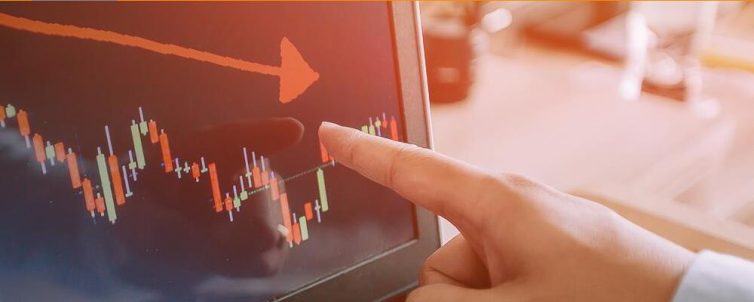
When the media speaks of a recession, a country’s economy is not doing well. Many people know that the term is related to the economy. But most people are not familiar with what it is in concrete terms and what signs experts refer to as a review.
- A recession is when a country’s economic growth is negative for at least two consecutive quarters compared to the previous year.
- Usually such a downturn occurs when the market overheats during a boom.
- The first signs of a recession could be, for example, a decline in demand, rising inventories and falling stock prices, and a pessimistic economic outlook.
- States and communities of states can counteract an economic downturn by adapting their currency and tax policies and through subsidy measures.
What is a recession?
A recession describes a phase of economic downturn. According to common definitions, it occurs when the economic growth of a country declines in two consecutive quarters compared to the previous year. The decisive factor here is the gross domestic product. If a recession lasts for a longer period of time, experts speak of depression.
How does a recession come about?
To understand how a period of downturn occurs, it is necessary to look at the business cycle of economies. This consists of four economic phases that a country goes through over time:
- 1st upswing phase (expansion / prosperity)
- Boom
- 3rd downturn (recession)
- Low phase (depression)
However, the individual phases can differ in terms of their duration. Since this is a model, there are always deviations in specific individual cases. However, a recession is usually preceded by an upswing that leads to a boom. The characteristic features of this expansionary phase include, among other things, growing order backlogs, which lead to an increase in production and, as a result, higher demand for labor.
A boom is characterized by full employment and fully utilized capacities, as a result of which wages and prices rise. The demand for credit is also increasing, which leads to rising interest rates. Sooner or later, however, the high production rates will cause the markets to overheat. Even at such a peak, gross domestic product can continue to rise, even though growth rates are already pointing to a recession. Finally, the economic low point is the depression.
What are the signs of a recession?
In general, there are several signs of a recession. The more warning signs appear, the more likely the downturn begins. In particular, the characteristic features of this phase include:
- Decline in demand
- rising unemployment
- Growing stocks
- Pessimistic expectations regarding economic development
- Declining investments
- Falling stock market prices
- Stagnating or falling prices, wages and / or interest rates
- Temporary shutdown of production facilities
What are the consequences of a recession?
A recession affects both the economy as a whole and citizens. Companies are struggling with excessively high inventory levels. As a result, there is an oversupply and prices fall because retailers try to counteract this with substantial discounts, among other things. Many companies are also cutting overtime, switching to short-time working and / or laying off workers. It is also possible that unprofitable branches of production are temporarily shut down.
In a recession, the number of unemployed usually increases noticeably. Understandably, people worry about their jobs; they postpone costly purchases for the time being. An exception are those customers who have been flirting with a certain product for a long time and who do not postpone the purchase in view of the lower prices.
In addition, stock prices also fall during a recession. Because these too are subject to the law of supply and demand. As a rule, however, good investment advisors recommend that their clients withdraw from the markets or reallocate their portfolio before the economic downturn.
What measures are possible against a recession?
In order to protect the economy from a recession or to prevent it from drifting into a depression, the state or a federation of states such as the European Union have various control instruments at their disposal. In order to stimulate lending and thus investments, central banks can, for example, lower key interest rates and introduce penalty rates . In addition, it is possible and has already happened that a central bank buys public and / or private securities. This procedure is known as “quantitative easing” or as quantitative easing (QE).
The state can support the economy in particular through tax cuts. As a result of the tax relief, the costs of the company decrease, so that it gets through the downturn better. However, the effect of this measure will take some time to become apparent. The state can also set up funding packages – for infrastructure or individual sectors, for example.
In addition, countries and communities of states have the opportunity to influence the currency through their monetary policy . As a rule, the devaluation of a currency leads to increasing export sales. This is justified as follows: If, for example, the euro loses against the dollar, US companies can buy German products at lower prices.
